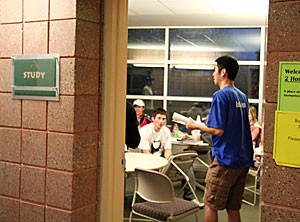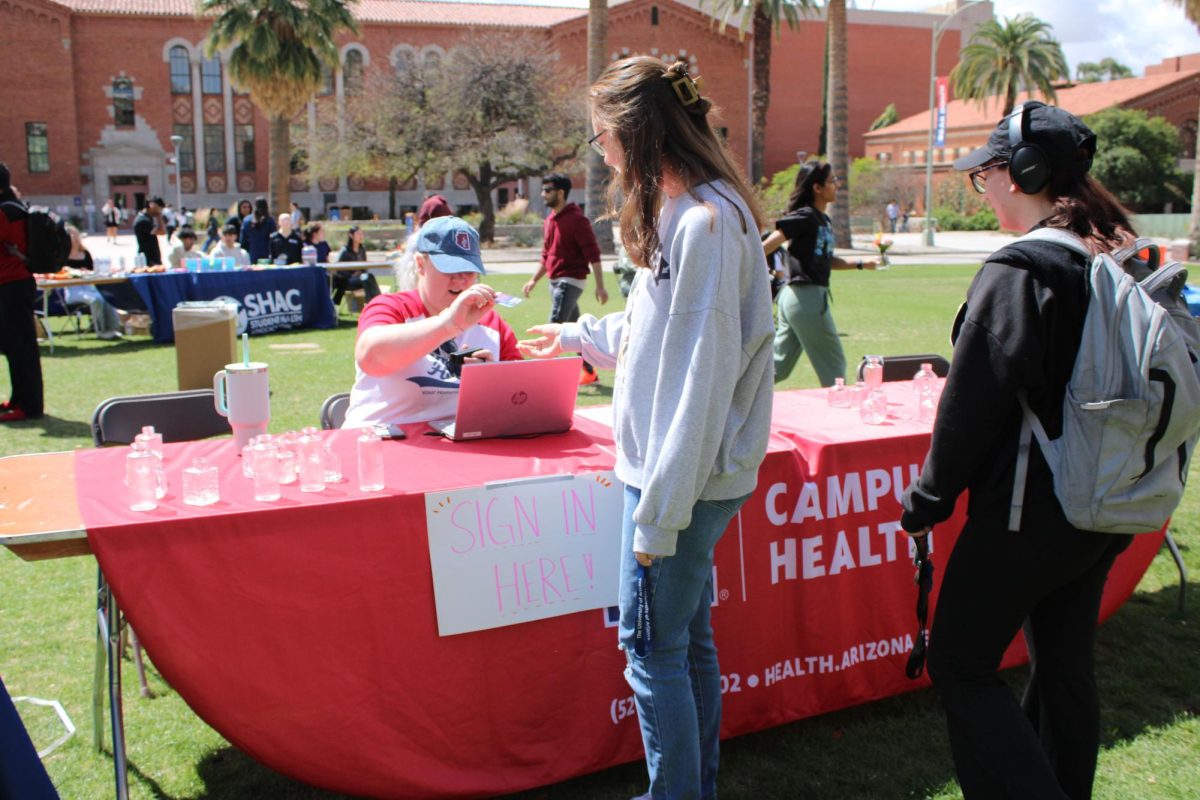PHOENIX – President Peter Likins announced one of the most complex tuition proposals in recent history yesterday that would leave some students facing a tuition jump of thousands of dollars.
The proposed tuition increase, approved by Likins, would increase the resident undergraduate tuition by $200, or 4.5 percent, and raise the non-resident undergraduate tuition by $1,222, or 9 percent.
Resident graduates would pay an additional $432, an 8.9 percent increase in tuition, while out-of-state graduate students would pay $1,242, an additional 8.9 percent in tuition.
College of Medicine students would see the largest of the increases, with a 10 percent tuition jump, or $1,427. There would be no tuition increases for students attending UA South.
Differential tuition would increase for Eller, Engineering
Likins also included differential tuition and increases in program fees for several colleges, which would apply to advanced-standing students.
Undergraduates in the Eller College of Management would see the current $500 in fees double under Likins’ recommendations. Undergraduates in the College of Engineering and the College of Architecture and Landscape Architecture would pay an additional $600 in tuition.
For graduate students, the increases in differential tuition under Likins’ plans are substantial.
Programs at the James E. Rogers College of Law will see an increase of $2,500 every year for the next three years. The doctor of pharmacy program in the College of Pharmacy will add $1,000 in tuition and the programs in the College of Nursing will add $4,000 in program fees. The largest increase is slated for the Executive MBA program in the Eller College of Management, which will add $7,500 to students’ bills.
The complex plan is a departure from previous tuition proposals, but Likins said this proposal best serves the needs of resident undergraduates.
“”The basic focus is always on resident undergraduates,”” he said.
He said the increase in overall tuition for resident undergraduates is substantially smaller than previous years because the differential tuition is designed to pay for costs specific to the needs of the colleges.
Tuition increase would allow for more financial aid
While there are huge increases in several programs, Likins said a component of his proposal would include taking 15 percent of the revenue from the differential tuition increases and setting it aside for need-based student financial aid.
“”We are more aggressive in increasing (need-based) financial aid,”” Likins said.
Likins said a study by the UA suggested recent increases in tuition paired with increases in need-based financial aid have allowed poorer students to attend the UA.
“”The neediest of the families have stayed with us,”” said Likins.
Likins also said a study of debt burden for recent graduates remains constant, with students carrying an average of $17,000 in debt after getting their bachelor’s degrees from the UA.
“”(Undergraduate debt) is not getting any bigger,”” said Likins.
Jack Jewett, a regent for the Arizona Board of Regents, said while he had not reviewed the proposal, he would support modest increases in tuition.
“”My overarching concern, and it’s very important, (is) that resident undergraduate tuition stays affordable for all qualified students,”” said Jewett.
While supportive of small increases, Jewett said that he wanted to make sure that existing financial aid would be sufficient to absorb increases in tuition.
“”Our existing stream of need-based financial aid will be affected by these increases,”” Jewett said.
Regent Ernest CalderÇün said although he had not seen the proposal, he would support a tuition increase that was on par with inflation.
Gov. Janet Napolitano, who asked Likins earlier this month to keep tuition as low as possible, was unavailable for comment on the proposal.
Proposal kills mandatory meal plan, adds new fees for wireless Internet
In addition to increases in tuition, the proposal includes a new fee to enhance the UA’s wireless Internet access system. A portion of the fee would also build a library of digital materials and wire classrooms to access the new library. The fee would be phased in over two years, with students paying $65 during the 2006-07 school year and $130 in 2007-08.
Likins’ proposal kills a proposed mandatory meal plan for students living in residence halls but mentions a future student referendum that would poll students on enhancements and new programs for the Student Union Memorial Center in 2007.
The proposal signals the intention of the UA to go forward with the expansion of the Student Recreation Center, asking the regents to extend the current fee past 2011.
Saundra Taylor, the senior vice president of Campus Life, said the fee that is currently in place will pay for the debt by 2011, but extending the debt will pay for the extension of the center.
Taylor said the expanded Rec Center would likely be completed before 2011.









